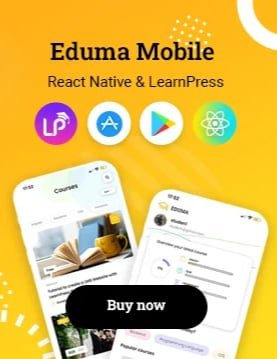In the second quarter of 2022, US e-commerce websites hit a 2.3% conversion rate. This stat underlines why digital marketers need strong conversion rate optimization (CRO) skills. Most marketing efforts focus on bringing traffic to websites. The goal is to turn this traffic into leads for sales teams. However, just attracting new visitors isn’t enough. It’s crucial to maximize the potential of current traffic and leads for real, long-lasting success. This is the essence of conversion rate optimization (CRO).
CRO aims to boost the percentage of website visitors who do a desired action. This action could be signing up for something, subscribing, or making a purchase. By improving website content, testing variations, and enhancing processes, CRO makes sure these visitors are top-notch leads. It leads to more revenue but costs less to acquire them.
Key Takeaways
- Conversion rate optimization is crucial for driving long-term, sustainable growth by maximizing the performance of existing website traffic and leads.
- CRO involves increasing the percentage of users who complete a desired action, such as making a purchase or filling out a lead form.
- Effective CRO strategies leverage content enhancements, split testing, and workflow improvements to drive more qualified leads and revenue.
- CRO can significantly improve key metrics like bounce rate, average time on page, and goal conversion rate.
- Implementing a comprehensive CRO strategy is essential for marketers looking to unlock new levels of success and profitability.
Introduction to Conversion Rate Optimization
Conversion rate optimization, known as CRO, is about getting more users to take a needed action. This action could involve signing up for a service or buying a product. By enhancing content, testing different versions, and improving how things flow, CRO brings better quality leads, more sales, and saves money on finding these leads.
What is Conversion Rate Optimization (CRO)?
A conversion rate shows the percent of users who do what you want on your site, like signing up or buying. A high rate suggests your site is doing well at grabbing user interest and taking them through to where you want them. On the other hand, a low rate can be due to many issues with how the site works or looks.
Importance of CRO for Businesses
Boosting your conversion rate could really change things for your business. Let’s say you sell more or get more clients by just adding 1% to your rate. This could mean a lot more business. Plus, making a landing page 5% better at converting could bring in half more people or sales. It basically makes the most of your current visitors to grow your business.
Calculating Conversion Rates
To figure out the conversion rate, you look at how many of your visitors actually do the action you want. You divide this by all your visitors, then multiply by 100 to make it a percentage. This number tells you how well your site and marketing are doing, helping you find what you need to work on and set goals.
| Metric | Value |
|---|---|
| E-commerce Conversion Rate (US, Q2 2022) | 2.3% |
| E-commerce Conversion Rate (UK, Q2 2022) | over 4% |
| Average Signup Form Conversion Rate (Landing Pages) | 23% |
| Increase in Leads/Customers (1% to 2% Conversion Rate) | 100% |
| Potential Increase in Conversions (10% to 15% Conversion Rate) | 50% |
Understanding Conversion Optimization Metrics
To make your website better at turning visitors into customers, tracking conversion optimization metrics is key. These numbers show how users interact with your site. They tell you if your efforts to improve are working or not.
Key Conversion Metrics to Track
Key conversion metrics you should watch are:
- Bounce rate: It’s when visitors leave your site without doing anything else.
- Average time on page: How long people stay on one page on your site
matters. - Goal conversion rate: This is the number of visitors who take an important action, like buying something.
Benchmarking Conversion Rates
Comparing your website to what’s usual in the industry or against rivals is benchmarking conversion rates. This helps you spot areas to get better at. It also shows what goals you should aim for. Knowing where you stand helps you focus on areas that need attention the most.
| Metric | Industry Average | Your Website |
|---|---|---|
| Bounce Rate | 45% | 52% |
| Average Time on Page | 2 minutes 30 seconds | 1 minute 45 seconds |
| Goal Conversion Rate | 3.5% | 2.8% |
Studying these conversion optimization metrics and comparing your site to these numbers helps a lot. It shows where you need to focus. And, it guides you in creating plans to increase your conversion rates.
Identifying Conversion Opportunities
Finding important chances for better conversion rates is crucial. Different website parts stand out for working on conversion rate optimization. They all offer various ways to improve conversion.
Homepage Optimization
The homepage is vital for boosting conversions. It’s the first place visitors land on and sets the tone for their journey. Improving the homepage’s look, message, and actions can really boost conversion opportunities and snag more leads.
Pricing Page Optimization
Pricing pages need work too for better conversion opportunities. By altering prices, clearly stating what each price gets, and offering easy ways to act, you can help visitors choose and take action. This may be making a purchase or signing up.
Blog Optimization
Optimizing blog posts can also boost conversion opportunities. Strategically littering these posts with calls-to-action can invite readers to sign up for more resources. It keeps them interested and moves them closer to being a solid lead.
Landing Page Optimization
Landing pages are super important for action-taking. They offer direct conversion opportunities. By loading these pages with videos, sneak peeks, and obvious steps to take, businesses can majorly up their conversion game.
| Optimization Target | Conversion Opportunity | Potential Impact |
|---|---|---|
| Homepage | First impression and guidance for visitors | Significant improvement in lead generation |
| Pricing Pages | Informed decision-making and purchase completion | Increased sales and revenue |
| Blog Content | Lead nurturing and resource sign-ups | Expanded email list and qualified lead pool |
| Landing Pages | Dedicated conversion-focused experiences | Highest average conversion rates for signup forms |
Working on these critical website parts can really help. It unlocks big conversion opportunities and leads to sustainable growth. More leads, sales, and revenue await.
Conversion Optimization Techniques
To boost website conversions, it’s crucial to know what your visitors like and how they act. Marketers study user habits and tech details to spot issues that lower conversions, like high bounce rates. They look out for low conversion rates, especially on certain pages or through specific devices and browsers.
Analyzing User Behavior and Device Data
Tools such as Google Analytics are great for digging into what users do on your site. They let you see patterns in behavior. These insights can guide your efforts to boost conversions. Looking at bounce rates, time spent on pages, and the rate at which users meet goals are vital.
Fixing Common CRO Issues
Problems like calls-to-action hidden below what you first see, or heavy key-worded tags and descriptions can hurt your site. Fixing these issues opens the way for more conversions. It makes the site better for visitors, too.
Improving Page Speed
Faster pages lead to more conversions. Even speeding up by just one second can boost conversions by 7%. To make your site quicker, work on images, and the code behind the scenes. You might also want to look into services that specialize in website speed.
These strategies can open new doors for bringing in more happy users to your site. This can lead to more sales and company growth over time.
Call-to-Action (CTA) Optimization
Making CTAs that grab attention and are clear is key in CTA optimization. Short phrases work best. They should be about five to seven words. These phrases should spell out what’s good about doing the action clearly.
Creating Compelling CTAs
Studies find that using words like “me” and “my” boosts conversion rates. Also, starting CTAs with “Get” instead of “Buy” or “Order” can get more people to click. This is because it highlights what the person gains. Use words that touch on human desires like greed or laziness. These can make CTAs more powerful.
Placement and Visibility of CTAs
CTAs should be easy to see and in a big font. Putting CTAs at the top of the page, “above the fold,” doesn’t always help. Making CTAs look like buttons with borders, shadows, and 3D effects is good. It makes them more eye-catching and clickable.
Testing different CTA placements and looks can boost conversion rates. How much this betters rates must be checked with A/B tests. These tests compare different versions with real users to see what works best.
| Metric | Statistic | Insight |
|---|---|---|
| Conversion Rate Metrics | Calculate the conversion rate by dividing the number of clicks on a call-to-action button by the number of times the CTA was viewed. | This provides a clear measure of the effectiveness of CTA optimization efforts. |
| A/B Testing Impact | Demonstrates that different CTAs can yield significant variations in performance, indicating the necessity of testing for optimization. | A/B testing is crucial for identifying the most effective compelling CTAs and CTA placement and visibility. |
| CTA Design Impact | The color of a CTA button can influence its effectiveness, with bright colors contrasting the page being more effective. | Leveraging contrasting colors can help CTAs stand out and improve CTA optimization. |
| Visibility Importance | It’s crucial for the CTA to be highly visible on the page, with a sizable font that attracts attention. | Ensuring proper CTA placement and visibility is essential for driving user engagement and conversions. |
Content Optimization for Conversions
Savvy marketers know the key to driving leads and boosting sales is through content optimization. This approach targets the content at the top of a webpage, also known as “above the fold.” It’s visible without scrolling and is essential for making a good first impression. Here, users decide whether to convert or not.
Above-the-Fold Content Experiments
Marketers dive into user behavior and data to upgrade content above the fold for better conversions. They might try new headlines, tweak the copy, move CTAs, and add engaging images or videos. These changes can make a big difference in how users respond to the content.
Reducing On-Page Distractions
It’s not just about what’s at the top. Marketers also work to cut out on-page distractions that can harm conversions. These include pop-ups or too many CTAs. Thorough content curation and a streamlined user journey help to maintain focus. This, in turn, boosts the chances of users converting.
Conversion Optimization and SEO Alignment
Conversion rate optimization (CRO) and search engine optimization (SEO) might appear as separate fields. Yet, they aim to boost sales and revenue for companies. When these two tactics work together, they bring in more qualified visitors and ramp up conversion rates.
Impact of CRO on Search Engine Rankings
CRO making a site more usable and user-friendly can boost its ranking on search engines. Google, for example, values websites that offer better user experiences. This highlights the importance of not only making your site user-friendly but also incorporating SEO practices.
By enhancing your website’s shape, content, and ease of use, you can drive up conversions. Plus, you’ll stand out more on search engine results pages (SERPs).
Integrating CRO with SEO Efforts
Blending CRO with SEO strategies is vital for maximizing their benefits. This involves tweaking title tags and meta descriptions to attract clicks and improve search visibility. The aim is to make your content both compelling and applicable to search queries.
Working these two together can pull in more quality visitors. These visitors are then more likely to become interested leads and customers.
The combo of CRO and SEO creates a potent tool for business growth. It allows you to draw in the perfect audience, offer them a smooth user experience, and increase conversions. This holistic strategy opens the door to greater success and profit for your business.
A/B Testing and Experimentation
A/B testing is the act of comparing two webpage versions to see which is better. It’s a key part of making more people take action on a website, known as conversion rate optimization. To do A/B testing right, you must set clear goals and reach the right people. You also need to be sure the results are reliable. By understanding the test outcomes, marketers can use real data to make smarter choices over time.
Setting Up A/B Tests
Good A/B tests start with knowing what you want to achieve. Carefully picking who will see the tests and ensuring the results are dependable is crucial. It’s important to set up tests that clearly show which changes really make a difference.
Interpreting Test Results
Looking at the data from A/B tests is key for making your website work better. You need to compare important numbers, like how many people click on your page or buy something. Figuring out why some things worked better helps decide what to change for good. This makes your website and customer experience better in the long run.
Conversion Optimization Tools and Resources
Marketers have many tools and resources to boost their conversion rates. A key tool is Google Analytics. It gives insights into what users do and how the site performs.
Tools like Google Optimize and Optimizely help with A/B testing. They let you test different versions of your site. Hotjar and Crazy Egg track user behavior, showing how visitors use your site.
| CRO Tool | Key Features | Pricing |
|---|---|---|
| HubSpot CTA Tool | Contact insights, marketing dashboard | Part of HubSpot platform |
| HelloBar | Lead capture through pop-up forms | Free to $99/month |
| Sumo | Welcome Mat, Smart Bar, scroll-triggered box, Contact Us form | Free tools |
| Picreel | Versatile CRO tools for lead capture | $49.97/month |
| BuzzSumo | Content research tools | Starting from $119/month |
| SimilarWeb | Digital traffic data analytics | Starting from $125/user/month |
Marketers also have access to guides and communities for CRO. Platforms like Land-book and Really Good Emails showcase great landing pages and emails.
Tools like SubjectLine.com and CoSchedule Headline Analyzer help test your marketing message. For deeper insights, Kissmetrics and Google Analytics are valuable.
This mix of tools helps marketers learn and improve. They can test, gather data, and follow the latest strategies for better results.
Conversion Optimization for Mobile
Mobile is becoming a key player in the digital world. It’s essential to meet the needs of mobile users when it comes to conversion rate optimization. This means making sure the mobile user experience is smooth and quick. Sites should load fast, be easy to move around, and look good on mobile. This can really boost mobile CRO and get more people to buy or sign up on their phones.
Optimizing for Mobile User Experience
Did you know websites that load in two seconds or less can see a 15% increase in converting visitors? And if a site works well on mobile, 37% of users are more likely to make a purchase. But here’s the kicker: if a site is slow, like taking more than 3 seconds to load, 53% of people will leave. Every second faster it loads earns a site a 17% better conversion rate. Also, using high-quality images might bump up conversions by 60%.
Mobile-Specific CRO Strategies
To really get the most out of your mobile site, try strategies made just for mobile. This includes making sure key info is visible without scrolling, using forms and buttons that are easy to tap on a phone, and testing how mobile-friendly your site is. For example, making Time Magazine’s site mobile-ready brought in 25% more visitors. Walmart saw a 20% rise in sales after they did the same. Putting a video on a mobile page can make over 86% more people convert. And clear buttons with space around them can raise conversions by up to 232%.
Focusing on mobile conversion rate optimization means knowing what mobile users do when they visit. This includes how they swipe, tap, and what they click on most. By using data tools, doing specific research for mobile, and making flows to convert visitors smoother, marketers can really improve their mobile CRO results.

Conversion Optimization Challenges and Solutions
Conversion rate optimization faces many hurdles. These include resistance to change and limited resources. There’s also the trouble of achieving significant test results. Yet, these challenges have clear solutions. Effective communication and data-based decisions are key. So is a commitment to always improving.
One big challenge is understanding the audience. This makes it hard to target improvements well. Creating detailed customer personas helps. These personas show who your audience is and what they need. They help tailor strategies that really connect with people.
Inadequate website traffic can be a major problem for testing and improving. To fix this, companies should focus on SEO and PPC ads. These steps drive more of the right people to their site.
Then there’s the issue of unclear Call-to-Actions (CTAs). If people don’t know what to do, they might not take action. Calls-to-action should be clear and compelling. They guide visitors on what to do next in a beneficial way.
Slow loading speeds lead to high bounce rates and low conversions. It’s vital to make your site faster. Ways to do this include regular site checks and using a content delivery network. Make sure images are optimized and only use the essential plugins to help your site run better.
Poor User Experience (UX) often leads to low conversion rates despite the traffic. The key is to make things easier for users. This means simpler navigation, better reading on different devices, and ensuring your site works well on mobile phones.
Lack of trust can definitely stop people from buying. To build trust, show reviews and offer secure payment options. Make sure you follow privacy laws. Being open and trustworthy encourages people to buy.
| CRO Challenges | CRO Solutions |
|---|---|
| Lack of understanding about the audience | Creating detailed customer personas |
| Inadequate website traffic | Investing in SEO and PPC advertising |
| Unclear Call-to-Action (CTA) | Designing clear and compelling CTAs |
| Slow loading speed | Regular website performance audits, optimizing images, and utilizing a content delivery network |
| Poor User Experience (UX) | Simplifying navigation, enhancing readability, and ensuring mobile-friendliness |
| Lack of trust | Displaying reviews and testimonials, offering secure payment options, and ensuring compliance with privacy laws |
By tackling these challenges with smart solutions, businesses can see big improvements. They’ll get more conversions, earn higher revenue, and keep customers happy.
Conversion Optimization Best Practices
Successful [CRO best practices] involve using known methods to boost how many visitors do something positive, like buy a product or sign up for a service. These steps include:
- Focusing on the user experience is key. This means making it easy and enjoyable for people to use your website. You do this by designing for mobile use, making sure pages load fast, and having buttons that stand out and make people want to click.
- Implementing a data-driven approach means making decisions based on numbers. You look at how people use your site, study what works and what doesn’t, and test different versions to see what people like best. This way, you’re sure you’re truly meeting your visitor’s needs.
- Conducting thorough competitor and industry research is essential. You need to know what others in your field are doing online. This helps you spot the best ideas and set your own smart goals.
- Prioritizing high-impact optimization opportunities focuses your effort where it matters most. Find and fix the parts of your site that can make the biggest difference. This often includes the homepage, pricing information, and landing pages where visitors first arrive.
- Continuously testing and iterating is key to ongoing success. Always be ready to test new ideas. Use what you learn to make your site even better at turning visitors into customers.
- Aligning CRO efforts with broader marketing and business objectives helps in a big way. Make sure your efforts in improving conversion support the bigger picture for your company. This leads to better results for the effort you put in.
- Fostering a culture of experimentation and continuous improvement helps businesses stand out. Encourage your team to always try new things and learn from them. This can give you a real edge over your competitors.
By following these guidelines, companies can make the most of [CRO best practices]. This, in turn, can boost their online success in bringing in new leads and sales.
Conversion Optimization Case Studies
Looking at CRO case studies can give marketers great ideas. They show tactics that worked and the results. Different companies from many fields share how well CRO programs can boost sales.
Take World of Wonder for example. They saw almost 20% more sales after tweaking their site with AI. This is big news for a sector (media and entertainment) where turning visitors into buyers is usually hard. By reading such CRO case studies, marketers can learn what works and compare their efforts to the best.
| Company | CRO Initiative | Result |
|---|---|---|
| New Balance Chicago | In 2 months, they grew their email list by 10% using smart digital strategies. They also made their Facebook ads more effective. The result was a 50% cut in ads cost but double the sales. | |
| Broomberg | They smartened up their blog posts and it paid off. 41% of the people that clicked through were on topics that really mattered. This brought them lots more visitors and leads. | |
| Bear Mattress | They looked at how they were selling items on their website. By making changes, they sold almost 25% more stuff. And they made over 16% more money. | |
| ArchiveSocial | By fixing up their main page and the easy-to-find ‘Request Demo’ page, they got a lot more people to click. 101.68% more, to be exact. | |
| Flos USA | They made buying easier from start to finish on their site. More people bought things at checkout, and this boosted their profits big time. | |
| POSist | Talking customers’ language and sprucing up their contact page got them 52% more people asking for a demo. | |
| Truckstop.com | They used a cool tool to see how people interacted with their site. With this info, they made it easier for folks to ask for a demo. The result was 26% more demo requests. |
These CRO case studies prove that the right changes can make a big impact. By following their steps, marketers can also boost their sales and leads.
Conclusion
Conversion rate optimization is a big deal for your online marketing. It helps make your efforts more effective and grows your business over time. This approach zeroes in on how people act, finds chances to change them into customers, and keeps making your website better. By doing this, marketers see more quality leads and customers without needing more traffic.
When you set up a detailed conversion rate optimization plan, you’re setting your business up for major wins. It’s all about improving the customer journey, testing what works best with A/B tests, making sure your site looks great on phones, and using data to guide your decisions.
Improving conversion rate optimization isn’t a one-time thing. It requires always keeping an eye on how things are going and making changes based on what you learn. This way, you keep finding better ways to grow and thrive in the ever-evolving digital world.
FAQ
What is Conversion Rate Optimization (CRO)?
Why is CRO important for businesses?
How do you calculate conversion rates?
What are some key conversion metrics to track?
How do you benchmark conversion rates?
What are some common conversion optimization opportunities?
What are some effective conversion optimization techniques?
How can you optimize calls-to-action (CTAs) for better conversions?
How can content optimization impact conversions?
How does CRO relate to search engine optimization (SEO)?
What is the role of A/B testing in conversion rate optimization?
What tools and resources are available for conversion rate optimization?
How can you optimize for mobile conversions?
What are some common challenges in conversion rate optimization?
What are the best practices for successful conversion rate optimization?
Source Links
- https://blog.hubspot.com/marketing/conversion-rate-optimization-guide
- https://www.webfx.com/blog/marketing/conversion-rate-optimization-techniques/
- https://www.hotjar.com/conversion-rate-optimization/
- https://www.optimizely.com/optimization-glossary/conversion-rate-optimization/
- https://www.hotjar.com/conversion-rate-optimization/metrics/
- https://unbounce.com/conversion-rate-optimization/cro-metrics-kpis/
- https://www.breakcold.com/whats-the-difference/conversion-rate-conversion-optimization
- https://www.optimizely.com/optimization-glossary/call-to-action/
- https://marketinginsidergroup.com/content-marketing/call-to-action-cta-best-practices/
- https://instapage.com/blog/6-simple-tips-for-creating-effective-call-to-action-button/
- https://getgenie.ai/content-optimization-for-conversions/
- https://www.linkedin.com/pulse/quick-guide-optimizing-content-conversions-composely-hdecc?trk=public_post_main-feed-card_feed-article-content
- https://conversion.com/blog/seo-and-cro/
- https://www.semrush.com/blog/seo-and-cro/
- https://landingi.com/conversion-optimization/seo/
- https://www.optimizely.com/optimization-glossary/ab-testing/
- https://vwo.com/ab-testing/
- https://blog.hubspot.com/marketing/conversion-rate-tools
- https://unbounce.com/conversion-rate-optimization/cro-software-tools/
- https://landingi.com/conversion-optimization/mobile/
- https://uxcam.com/blog/cro-for-mobile/
- https://www.optimonk.com/challenges-of-marketers/
- https://www.linkedin.com/pulse/overcoming-common-challenges-conversion-rate-optimization-leadsview-puroc
- https://vwo.com/blog/5-conversion-rate-optimization-challenges/
- https://www.hotjar.com/conversion-rate-optimization/best-practices/
- https://www.optimizely.com/insights/blog/conversion-rate-optimization-best-practices/
- https://unbounce.com/conversion-rate-optimization/cro-case-studies/
- https://vwo.com/conversion-rate-optimization/conversion-rate-optimization-case-studies/
- https://sarasanalytics.com/blog/conversion-rate-optimization/
- https://breakcold.com/whats-the-difference/conversion-rate-conversion-optimization
- https://landingi.com/conversion-optimization/














